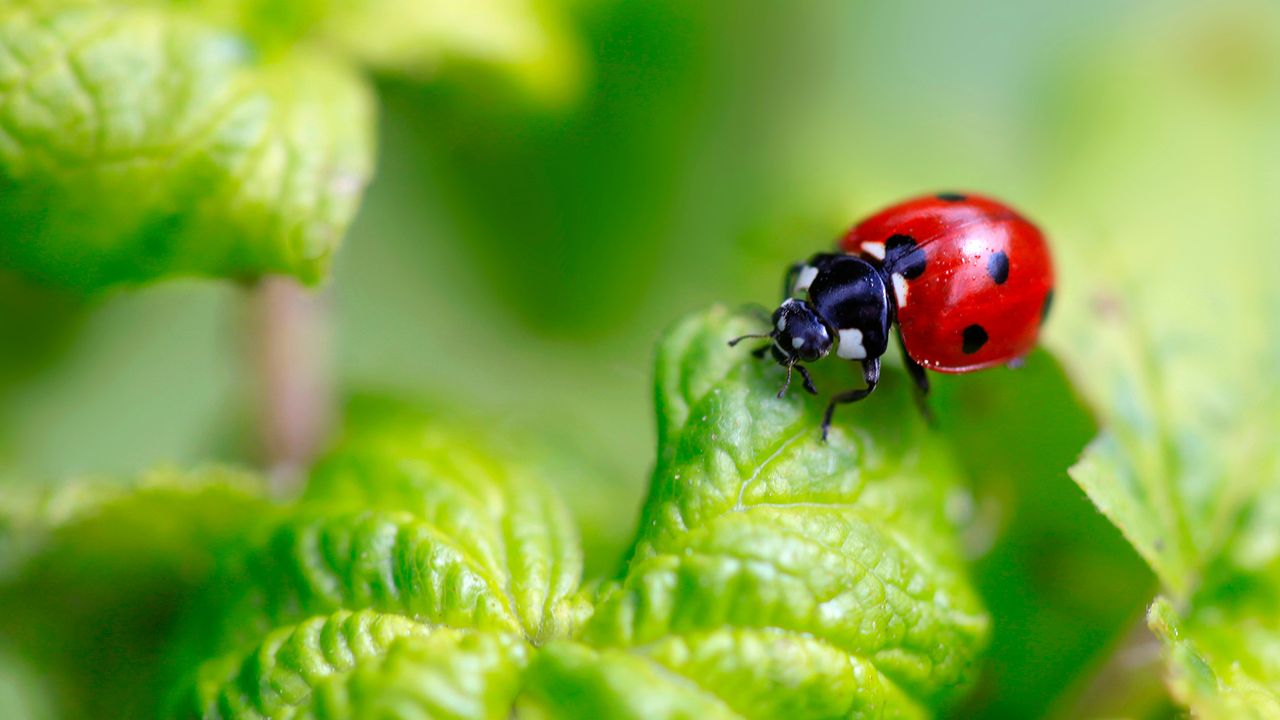Lifestyle
Pest Experts Advise Against Squashing Ladybugs Indoors

Pest control specialists are urging homeowners to avoid squashing ladybugs found indoors. While many might instinctively eliminate any insect that enters their home, experts highlight that ladybugs are unique creatures that can cause more harm than good when killed.
Sophie Thorogood, technical training manager at Pest-Stop, explains that ladybugs exhibit a defensive behavior known as “reflex bleeding.” When threatened, they release a yellowish fluid called hemolymph, which not only has a strong odor but can also stain surfaces. This fluid is a natural deterrent against predators, containing isopropyl methoxy pyrazine, which gives it a distinctive scent and taste.
The act of squashing a ladybug can trigger this release, creating an unpleasant smell that can linger. The hemolymph contains alkaloids that can irritate human skin and cause numbness, making it a risky choice to squish these insects. Thorogood emphasizes, “It’s better to move them outside and let them be on their way, rather than squish them.”
Understanding the Role of Ladybugs
Beyond their defensive tactics, ladybugs play a beneficial role in gardens and ecosystems. These diminutive insects are known for preying on harmful pests such as aphids, mites, and mealybugs. Their presence can reduce the need for chemical pesticides, which can be detrimental to the environment.
Removing ladybugs from the local ecosystem can lead to an increase in pest populations. With a significant role in maintaining garden health, their protection is crucial. Ladybugs are admired not only for their ecological contributions but also for their charming appearance, characterized by their red-and-black spotted shells.
If homeowners encounter a ladybug indoors, it is important to remember that these insects are not seeking shelter; rather, they often find themselves inside by mistake. The best practice is to gently capture the ladybug and relocate it outdoors. This can be done by picking it up carefully and guiding it towards an open window or door. Since ladybugs can fly, they can be released into the air or placed on a leaf or branch outside, helping them return to their natural habitat.
Alternatives to Chemical Pest Control
For those looking to manage pests without resorting to harmful chemicals, natural alternatives are available. One such option is diatomaceous earth, a fine powder derived from fossilized marine organisms. This organic substance can be sprinkled around outdoor plants to deter a range of pests, including ladybugs.
While the presence of ladybugs in the home might be unsettling for some, understanding their ecological importance and harmless nature is essential. Rather than squashing them, homeowners are encouraged to adopt gentle removal methods that benefit both the ladybugs and the environment. Ultimately, the goal should be to coexist with these beneficial insects rather than eliminate them.
-

 Technology5 months ago
Technology5 months agoDiscover the Top 10 Calorie Counting Apps of 2025
-

 Health3 months ago
Health3 months agoBella Hadid Shares Health Update After Treatment for Lyme Disease
-

 Technology1 week ago
Technology1 week agoOpenAI to Implement Age Verification for ChatGPT by December 2025
-

 Health3 months ago
Health3 months agoErin Bates Shares Recovery Update Following Sepsis Complications
-

 Technology4 months ago
Technology4 months agoDiscover How to Reverse Image Search Using ChatGPT Effortlessly
-

 Technology3 months ago
Technology3 months agoElectric Moto Influencer Surronster Arrested in Tijuana
-

 Technology1 month ago
Technology1 month agoDiscover 2025’s Top GPUs for Exceptional 4K Gaming Performance
-

 Health3 months ago
Health3 months agoAnalysts Project Stronger Growth for Apple’s iPhone 17 Lineup
-

 Technology5 months ago
Technology5 months agoMeta Initiates $60B AI Data Center Expansion, Starting in Ohio
-

 Technology5 months ago
Technology5 months agoRecovering a Suspended TikTok Account: A Step-by-Step Guide
-

 Health5 months ago
Health5 months agoTested: Rab Firewall Mountain Jacket Survives Harsh Conditions
-

 Lifestyle5 months ago
Lifestyle5 months agoBelton Family Reunites After Daughter Survives Hill Country Floods









